The Lunchbox (2013): loneliness in the midst of the crowd | soledades en medio de la multitud [ENG|ESP]
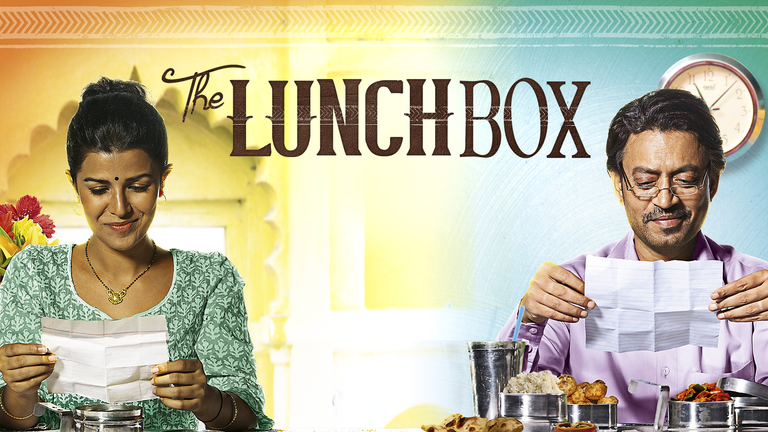
Nominada a los BAFTA como Mejor Película de Habla No Inglesa
I'm not sure I heard anything about this film when it was released because I don't remember it being on my radar until a few months (maybe weeks) ago when it appeared in an Instagram post. Shortly after, I learned that Irrfan Khan, the star of this film, turned down the opportunity to work with Christopher Nolan because he was already committed to this project. With just those two pieces of background information and no context about the story or plot of the film, I set out to watch it a few nights ago.
No estoy seguro de haber oído nada de esta película en el momento de su estreno porque no recuerdo haberla tenido en mi radar hasta hace unos pocos meses (tal vez semanas) cuando me apareció en alguna publicación de Instagram. Poco después supe que Irrfan Khan, protagonista de esta cinta, rechazó la oportunidad de trabajar con Christopher Nolan por estar comprometido antes con este proyecto. Con apenas esos dos antecedentes y nada de contexto sobre la historia o la trama de la película, me dispuse a verla hace algunas noches.
Before I dive into the film, I need to give you a little context. India is the most populous country in the world, and Mumbai is one of its most densely populated cities (we're talking about 24,000 inhabitants per square kilometer). As you can imagine, taking transportation, getting stuck in traffic, or simply getting around the city must be very complicated, which only adds to the mystery of the dabbawalas' efficiency. In Hindi, a dabba is a lunchbox, usually made of metal (aluminum) and cylindrical in shape, with several containers for storing food, and is used to transport food. Hence, the dabbawalas are the people responsible for delivering these lunchboxes. Now, given the high population density of Mumbai, there are many companies, offices, and jobs there, so people from the outskirts of the city often seek and find work there. Every day, thousands of housewives prepare lunch for their partners and send the food to their workplaces through the dabbawalas. Some will eat at a restaurant near the office, of course, and perhaps others can go home for lunch, but most cannot. Why don't they take food prepared at home with them when they leave for work? I don't know. Perhaps it's because they leave very early for work or prefer to consume food prepared with greater freshness, but the fact is that tens of thousands of lunches are transported daily by these dabbawalas throughout the city in a system with 99.99% effectiveness and an error rate of 1 in 6,000,000. How do they do it? That is part of the charm and also the mystery.
Antes de adentrarme en la cinta, necesito darles un poco de contexto. La India es el país más poblado del mundo y Mumbai una de sus ciudades más pobladas (hablamos de unos 24.000 habitantes por km²). Como puede imaginarse, tomar el transporte, meterse en el tráfico o sencillamente desplazarse por la ciudad debe ser muy complicado, lo que no hace sino aumentar el misterio en la eficacia de los dabbawala. En hindi, una dabba es una vianda, una fiambrera, normalmente metálica (aluminio) y cilíndrica con varios envases para guardar comida y es ocupada para transportar alimentos. De allí que los dabbawala sean las personas que se encargan de la entrega de estas viandas. Ahora bien, dada la alta densidad demográfica de Mumbai, existen allí muchas empresas, oficinas y puestos de trabajo, por lo que las personas de las afueras de la ciudad suelen buscar y encontrar trabajo allí, así que cada día miles de amas de casa preparan el almuerzo de sus parejas y envían la comida a sus lugares de trabajo a través de los dabbawalas. Algunos comerán algo en un restaurant cerca de la oficina, claro, y quizás otros puedan acercarse a casa en horas del almuerzo, pero la mayoría no, ¿por qué no se llevan la comida preparada desde casa al salir hacia su trabajo? No lo sé. Quizás es que salen muy temprano a trabajar o que prefieren consumir los alimentos preparados con una mayor frescura, pero lo cierto es que decenas de miles de almuerzos son transportados diariamente por estos dabbawalas a lo largo y ancho de la ciudad en un sistema con una efectividad del 99.99% y un margen de error de 1 en cada 6.000.000, ¿cómo lo logran? Eso es parte del encanto y también del misterio.
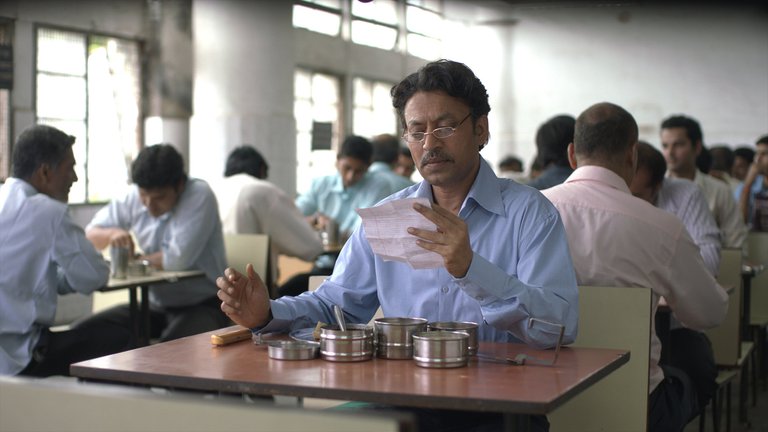
So, in that context, it's all the more surprising when one day, one of these deliveries arrives at the wrong place. Saajan Fernandes (Irrfan Khan) receives a dabba in his office with a delicious meal that was not meant for him, but the first person to notice is not him—who thanks the restaurant that sends him his lunches for the dedication on that day's menu—but Ila (Nimrat Kaur), the woman who prepared it for her husband Rajiv, who has eaten something else (the menu that was originally supposed to go to Saajan). When the mistake is repeated the next day, Ila begins to leave notes in the dabba for Saajan, and soon a kind of correspondence is established between the two strangers.
Entonces, en ese contexto, resulta más sorprendente que un día, una de estas entregas llegue al lugar equivocado. Saajan Fernandes (Irrfan Khan) recibe en su oficina una dabba con una deliciosa comida que no le correspondía, pero la primera persona en darse cuenta no es él - quien agradece al restaurante que le envía los almuerzos la dedicación en el menú de ese día - sino Ila (Nimrat Kaur), la mujer que la ha preparado para su marido Rajiv quien ha comido otra cosa (el menú que originalmente debía llegar a Saajan). Cuando, al siguiente día, el error se repite , Ila comienza a dejarle notas en la dabba a Saajan y pronto se establece una especie de correspondencia entre los dos desconocidos.
Before the advent of cell phones, the internet, and apps, many people left messages in the dabba—notes for their spouses, news, reminders, etc.—but no one does that anymore. Saajan is surprised to find the first note, but he responds, and over the next few weeks, the two begin to share increasingly personal things with each other. Ila's marriage is far from perfect, her parents are going through a difficult situation, and her only companions seem to be her sweet daughter, her noisy aunt and neighbor, and now this guy who is eating the meals she prepares. For his part, Saajan, after 35 years of service at the same company, has decided to retire. It's his last month of work, and he's a lonely, distant, serious widower. They couldn't be more different, but the two discover how they can understand and accompany each other even without knowing each other. Through the relationship between Saajan and Ila, The Lunchbox helps explore the corners of human loneliness, understanding, trust, secrets, identity, the weight of the past, wounds, and hope. I wouldn't say it's a love story per se; that is, yes, there's love in that exchange and openness with a stranger to whom we reveal and expose our soul, but I think that love stems a little from empathy, from understanding another human being whom we love, but not necessarily linking that idea to courtship or romance between two people. I think rather that Saajan and Ila are friends who find each other at the moment when—without knowing it—they needed each other most.
Antes de la aparición de los teléfonos celulares, el internet y las aplicaciones, muchas personas dejaban mensajes dentro de las dabba, notas para sus esposos, noticias, recordatorios, etc., pero ya nadie lo hace. Saajan se sorprende al encontrar la primera nota, pero la responde y a lo largo de las siguientes semanas, ambos comienzan a contarse cosas cada vez más personales. El matrimonio de Ila dista de ser perfecto, sus padres están atravesando una situación difícil y sus únicas compañías parecen ser su dulce hija, su ruidosa tía y vecina y ahora este sujeto que se está comiendo los platos que ella prepara; por su parte, Saajan, después de 35 años al servicio de la misma empresa, decidió pedir su jubilación, es su último mes de trabajo y es un hombre solitario, distante, serio y viudo. No podrían ser más distintos, pero los dos van descubriendo cómo pueden entenderse y acompañarse aún sin conocerse. A través de la relación entre Saajan e Ila The Lunchbox ayuda a explorar los rincones de la soledad humana, la comprensión, la confianza, los secretos, la identidad, el peso del pasado, las heridas y la esperanza. Yo no diría que es una historiad de amor propiamente dicha; es decir, sí, hay amor en ese intercambio y esa apertura con un desconocido a quien revelamos y exponemos nuestra alma, pero creo que ese amor nace un poco de la empatía, del entendimiento con otro ser humano a quien amamos, pero no necesariamente ligando esa idea a un cortejo o a un romance entre dos. Creo más bien que Saajan e Ila son amigos que se encuentran en el momento en el que - sin saberlo - más se necesitaban.
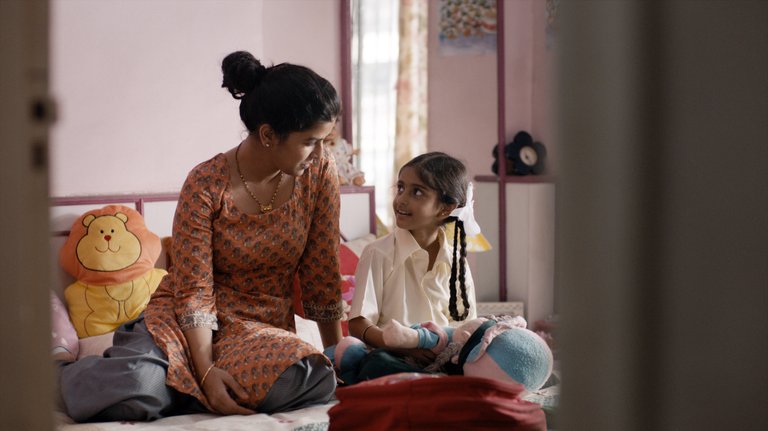
I liked the technical aspects of the film, the photography, editing, and script, especially the sequences showing the work of the dabbawalas, which were filmed as if they were a documentary and never cease to impress me with the precision of the service. If, in a food delivery app in the West, with just a handful of orders, all from a single restaurant, I still receive the wrong order, how do the dabbawalas manage to deliver almost 200,000 lunch boxes a day without making a mistake? It's impressive.
Me gustaron los aspectos técnicos de la película, fotografía, montaje, guion, especialmente las secuencias que muestran el trabajo de los dabbawala, que fueron filmadas como si se tratase de un documental y que no dejan de impresionarme por la precisión del servicio. Si en una aplicación de delivery de comida en occidente, con apenas un puñado de comandas, todas de un único restaurante, aún así he recibido la orden equivocada, ¿cómo hacen los dabbawalas para entregar casi 200.000 fiambreras diarias sin equivocarse? Es impresionante.
The story is interesting and the script is well written enough to make it entertaining, thought-provoking, and dynamic. However, I think the film owes a lot to the performances of its two leads. Nimrat Kaur is charming and convincing as Ila in all her facets—mother, wife, cook, daughter, and woman. For his part, Irrfan Khan does everything right. By committing to this project, the actor, who has worked extensively in Hollywood (Inferno, Life of Pi, Jurassic World, and the memorable Slumdog Millionaire), turned down Christopher Nolan's offer to join Interstellar in a role that was later given to Matt Damon because the schedule required four months of filming in the West, which Khan was unable to do. Seeing how everything turned out, I think it was meant to be. Damon does a good job on that interplanetary base, and I don't know if any other Indian actor could have played Saajan as well as Khan did. A man of few words, with long, serious looks, big eyes, morally correct, a heart as kind as it is wounded, Saajan is a character who is endearing, I think, thanks to Khan's performance, and he is the greatest success in The Lunchbox, which, without being a perfect film, is very enjoyable. I also don't understand why the country's film academy decided to send another film to represent it at the Oscars that year, but critics, audiences, and above all, time, have managed to give this emotional and melancholic story its place of honor. It reflects on the pleasures of life, emotions, the value of pursuing dreams, the weight of customs, and the passage of time, among other things. How many of you have seen this film? I look forward to reading your comments.
La historia es interesante y el guion está lo suficientemente bien escrito como para que resulte entretenido, reflexivo y dinámico. Sin embargo, creo que la película le debe mucho a las actuaciones de su pareja protagonista. Nimrat Kaur resulta encantadora y convincente como Ila en todas sus facetas, madre, esposa, cocinera, hija y mujer. Por su parte, Irrfan Khan lo hace todo bien. Al comprometerse con este proyecto, el actor, que ha trabajado bastante en Hollywood (Inferno, Life of Pi, Jurassic World y la recordada Slumdog Millionaire) rechazó la oferta de Christopher Nolan para unirse a Interstellar en un papel que luego fue dado a Matt Damon porque la agenda le pedía estar cuatro meses filmando en Occidente y Khan no podía. Viendo cómo salió todo, creo que pasó lo que tenía que pasar. Damon no lo hace mal en esa base interplanetaria y no sé si algún otro actor de la India hubiera podido encarnar a Saajan como lo hizo Khan. Parco en palabras, de miradas largas y serias, ojos grandes, moralmente correcto, un corazón tan bondadoso como herido, Saajan es un personaje que resulta entrañable, creo yo, gracias al trabajo interpretativo de Khan y es el mayor acierto en The Lunchbox que sin ser una película perfecta resulta muy disfrutable. Yo tampoco entiendo por qué la academia de cine del país decidió enviar otra película en su representación para los premios Oscar de ese año, pero la crítica, el público y sobre todo el tiempo, han logrado darle su lugar de honor a esta emotiva y melancólica historia que reflexiona sobre los placeres de la vida, las emociones, el valor de perseguir los sueños, el peso de las costumbres y el paso del tiempo, entre otras cosas, ¿cuántos de ustedes han visto esta cinta? Los leo en los comentarios.
Reviewed by | Reseñado por @cristiancaicedo
Other posts that may interest you | Otros posts que pueden interesarte:
 |
|---|
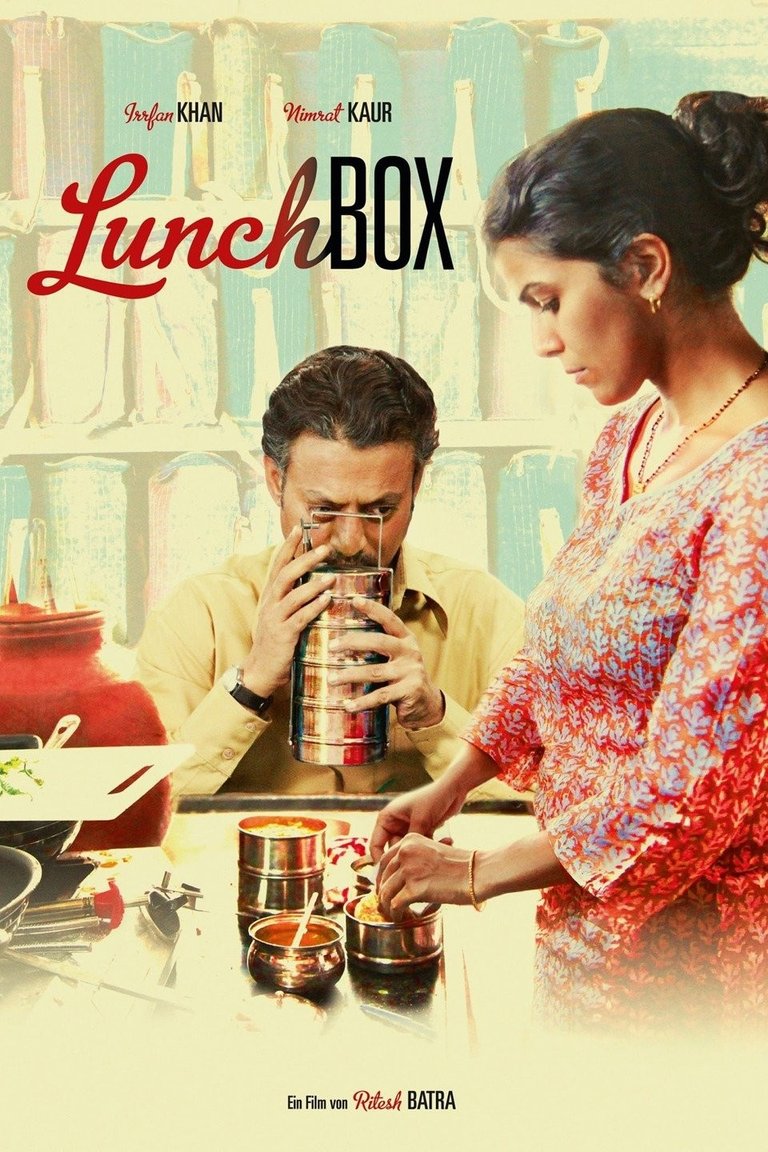


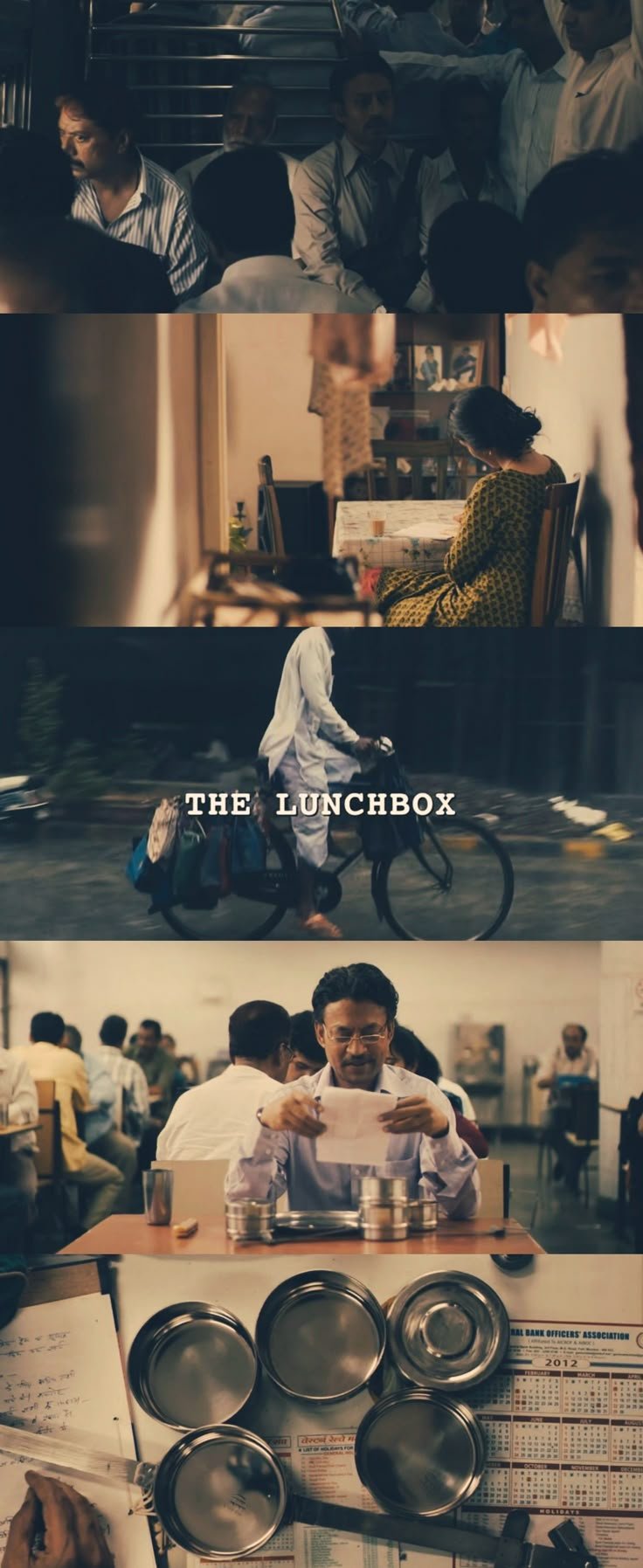
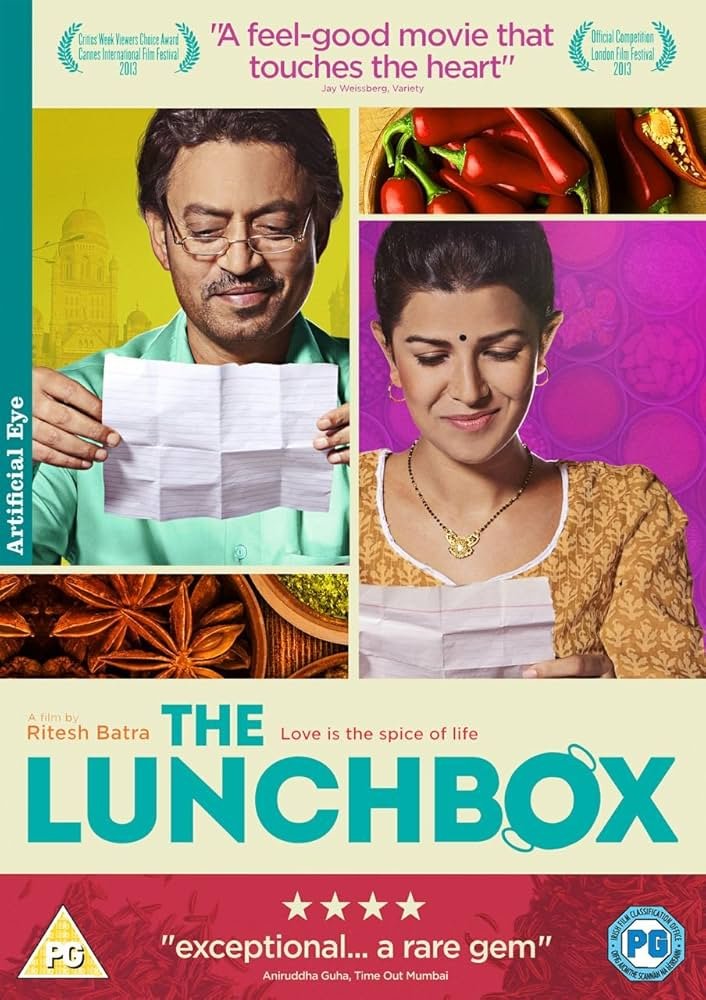
A mi este país me llama la atención, sobre todo sus costumbres, religión y clases sociales. Hace poco vi una en Netflix llamada ¡Que tiene que ver el amor? sobre la manera como contraen matrimonio muy buena. Te la recomiendo.
Anotada en mi lista por ver.
Saludos @cristiancaicedo
Voy a buscar esa que mencionas, no la había escuchado. Muchas gracias por leerme y comentar.
This post has been manually curated by @bhattg from Indiaunited community. Join us on our Discord Server.
Do you know that you can earn a passive income by delegating to @indiaunited. We share more than 100 % of the curation rewards with the delegators in the form of IUC tokens. HP delegators and IUC token holders also get upto 20% additional vote weight.
Here are some handy links for delegations: 100HP, 250HP, 500HP, 1000HP.
100% of the rewards from this comment goes to the curator for their manual curation efforts. Please encourage the curator @bhattg by upvoting this comment and support the community by voting the posts made by @indiaunited.
on of the best movie i have every seen. Irrfan Khan was a legend.
kaye kaa best
ending ni dekhe kyaa
ese koi movie khatam karta hain kyaaa
Adhure kahani
Was a Legend and is a Legend.
Indeed 😊
Que locura, la India es apasionante en muchos aspectos, y esta película, intrigante para mi.
Como hicieron para que el error se repitiera diariamente y el esposo no comía...
Cosas de la vida, del destino, o del guionista y del cine xD
Hey @cristiancaicedo!
why did you remind me of this movie?
I didn't like the ending of movie.
It is reality but who watches movie to see reality.
People watches movies to seek their fantasy.
Any way, Here is a !PIZZA for you 🍕
Enjoy weekends.
hahaha sorry not sorry... I didn't like that ending either; I mean, I didn't liked the fact the Saajan decided for the both of them without hearing Ila's opinion. Thank you so much for your words. Greetings.
Hearing her opinion is second thing. Thinking low about himself was a big shocker to me. In entire movie, he was full of fun. At the end, why would he think of himself low.
Anxiety? Fear? Legs frozen? I don't know. I am nooooo faaaak shit
Why would you loose confidence at a last moment?
It's like coming to finish line but not crossing it.
I agree with you on that. I think it was fear, but it kind of betrays what Saajan's evolution had been showing through the movie
$PIZZA slices delivered:
@sagarkothari88(6/20) tipped @cristiancaicedo
Come get MOONed!
muy interesante, buen post
very interesting, good post